
Lunenburg is a port town on the South Shore of Nova Scotia, Canada. Founded in 1753, the town was one of the first British attempts to settle Protestants in Nova Scotia.
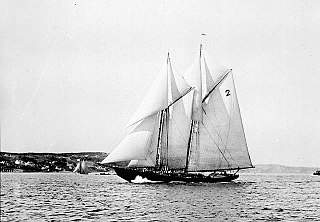
Bluenose was a fishing and racing gaff rig schooner built in 1921 in Lunenburg, Nova Scotia, Canada. A celebrated racing ship and fishing vessel, Bluenose under the command of Angus Walters, became a provincial icon for Nova Scotia and an important Canadian symbol in the 1930s, serving as a working vessel until she was wrecked in 1946. Nicknamed the "Queen of the North Atlantic", she was later commemorated by a replica, Bluenose II, built in 1963. The name Bluenose originated as a nickname for Nova Scotians from as early as the late 18th century.

Mahone Bay is a town on the northwest shore of Mahone Bay along the South Shore of Nova Scotia in Lunenburg County. A long-standing picturesque tourism destination, the town has recently enjoyed a growing reputation as a haven for entrepreneurs and business startups. The town has the fastest growing population of any municipality in Nova Scotia according to the 2016 census, experiencing 9.9% population growth.

Yarmouth is a town in southwestern Nova Scotia, Canada. A port town, industries include fishing, and tourism. It is the terminus of a ferry service to Bar Harbor, Maine, run by Bay Ferries.

Pictou Town is a town in Pictou County, in the Canadian province of Nova Scotia. Located on the north shore of Pictou Harbour, the town is approximately 10 km north of the larger town of New Glasgow.

Riverport is a village in Lunenburg County, Nova Scotia, Canada. The harbour of Ritcey Cove is free from shoals and safe from every wind, considered one of the finest in North America. Riverport is a five-minute drive to several public beaches including Hirtle's Beach, Kingsburg Beach, Oxner Beach, Rose Bay Beach and Spindler Beach.

Bluenose II is a replica of the fishing and racing schooner Bluenose, commissioned by Sidney Culverwell Oland and built in 1963 as a promotional yacht for Oland Brewery. Sidney Oland donated the schooner to Nova Scotia in 1971 and it has since operated as a sailing ambassador and promotional device for Nova Scotia tourism. In honour of her predecessor's record, Bluenose II does not officially race.

Theodore Tugboat is a Canadian children's television series about a tugboat named Theodore who lives in the Big Harbour with all of his friends. The show originated in Halifax, Nova Scotia, Canada as a co-production between the CBC, and the now defunct Cochran Entertainment, and was filmed on a model set using radio controlled tugboats, ships, and machinery. Production of the show ended in 2001, and its distribution rights were later sold to Classic Media. The show premiered in Canada on CBC Television, then went to PBS, was on Qubo in the United States, and has appeared in eighty different countries.
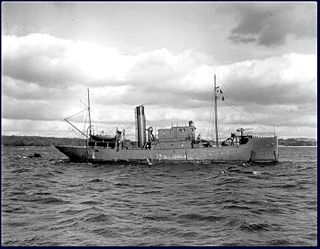
HMCS Arleux was one of twelve Battle-class naval trawlers used by the Royal Canadian Navy (RCN). Entering service in 1918 near the end of the First World War, the vessel had a short career with the RCN, being transferred to the Department of Marine and Fisheries in 1922. Arleux was used for fisheries patrol off the east coast of Canada until 1939, when the ship was reacquired by the RCN at the onset of the Second World War. Used as a gate vessel during the war and designated Gate Vessel 16, the ship was sold for mercantile purposes following the war. The ship foundered in 1948 off the coast of Nova Scotia.
William James Roué was a naval architect famous for his design of the Bluenose fishing schooner, which sailed to victory in the Halifax Herald International Fisherman's competition in 1921, 1922, 1923, 1931 and 1938, and held the record for the largest catch of fish ever brought into Lunenburg.

Mary Helen Creighton, CM was a prominent Canadian folklorist. She collected over 4,000 traditional songs, stories, and beliefs in a career that spanned several decades, and she published many books and articles on Nova Scotia folk songs and folklore. She received numerous honorary degrees for her work and was made a Member of the Order of Canada in 1976.
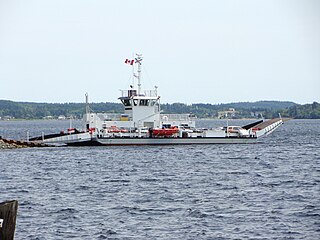
The LaHave River is a 97 km (60 mi) river in Nova Scotia, Canada, running from its source in Annapolis County to the Atlantic Ocean. Along its way, it splits the communities of LaHave and Riverport and runs along the Fairhaven Peninsula and bisects the town of Bridgewater flowing into the LaHave River estuary. Tides affect water levels for about 20 km up the river. There are a number of tourist attractions along the river, and it is also well-used for recreational sailing. As well as two bridges at Bridgewater, the river can be crossed by a cable ferry at the Community of LaHave.

Angus James Walters was a sailor and sea captain who skippered Bluenose from 1921 to 1938. Walters captained Bluenose to five international sailing races, and was undefeated for seventeen years.
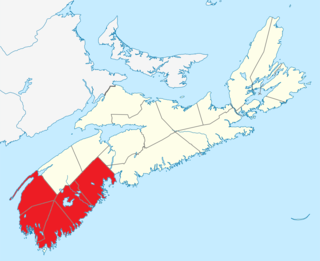
Southern Nova Scotia or the South Shore is a region of Nova Scotia, Canada. The area has no formal identity and is variously defined by geographic, county and other political boundaries. Statistics Canada, defines Southern Nova Scotia as an economic region, composed of Lunenburg County, Queens County, Shelburne County, Yarmouth County, and Digby County. According to Statistics Canada, the region had the highest decrease of population in Canada from 2009 to 2010, with a population decrease of 10.2 residents per thousand. The region also has the second-highest median age in Canada at 47.1 years old.

Sherman Zwicker is a wooden auxiliary fishing schooner built in 1942 at the Smith and Rhuland shipyard, Lunenburg, Nova Scotia. Influenced by the design of the famous Bluenose, Sherman Zwicker was built to fish the Grand Banks. The schooner was built for F. Homer Zwicker of Zwicker and Co. Officially christened in 1942, the F/V Sherman Zwicker is the last operable saltbank fishing vessel in existence.
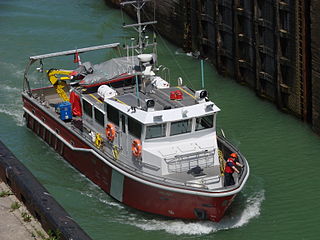
ABCO Industries is located on the waterfront of the UNESCO World Heritage Site-designated port town of Lunenburg, Nova Scotia.
James Havelock Harding, was a master shipwright and shipbuilder who worked at Shelburne, Nova Scotia. He was born in Queens County, Nova Scotia, Canada in 1883.

Snyder's Shipyard Ltd. is a boatbuilding company located in Dayspring, Lunenburg County, Nova Scotia. The company is known to have built and repaired over 220 boats and vessels, most notable being the Bluenose II schooner and Theodore Too.
Adams & Knickle Ltd. is a Canadian fishing company located in Lunenburg, Nova Scotia. In its early years, the company was an exporter of salt fish. It presently fishes for deep-sea scallops.
The FV Flora Alberta was a Canadian auxiliary fishing schooner based out of Lunenburg, Nova Scotia. She was launched in 1941 by Smith and Rhuland, the company's 187th vessel. The managing owner of the vessel was fishing company Adams & Knickle.
















